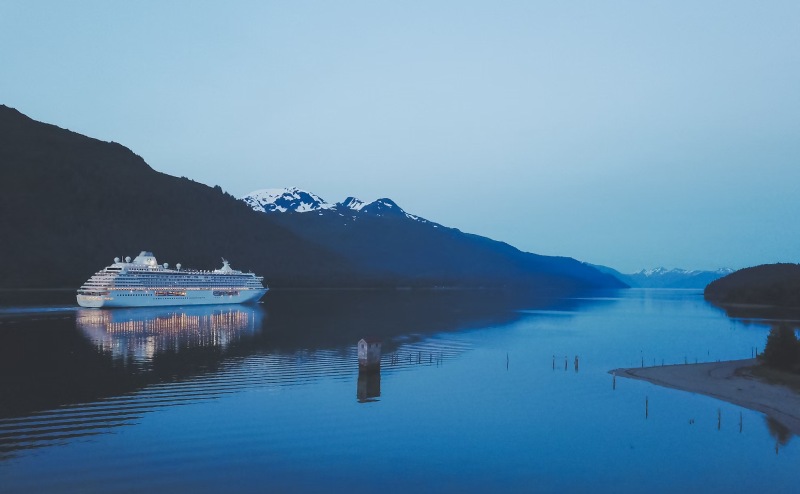If you’re planning an Alaska cruise, you might be wondering when the right time is to set sail. To help you decide, we’ve put together a month-by-month guide detailing the benefits of cruising in each month. Whether you’re interested in wildlife photography, enjoying pleasant temperatures, or finding the best deals and avoiding crowds, my guide will help you choose the perfect time for your Alaska cruise.
The Alaska cruise season is relatively short, running from late April to early October, with each month offering unique advantages. Summer is known for its warm temperatures and long days. Spring, on the other hand, has fewer tourists and more opportunities to see wildlife.
Why Choose an Alaska Cruise?
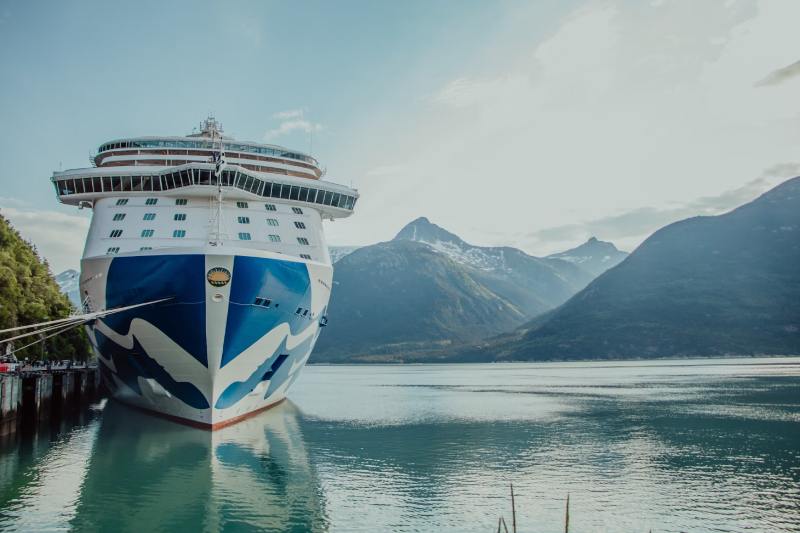
Choosing an Alaska cruise lets you experience some of the most stunning landscapes on Earth. From the awe-inspiring glaciers calving into the ocean to unique wildlife encounters in their natural habitats. Unlike Caribbean cruises that mostly traverse open waters, Alaska cruises offer close-up views of dramatic cliffs and lush forests. Additionally, the long days during the Alaskan summer allow more time for sightseeing and excursions.
Alaska shore excursions are unlike any other. Bear watching, glacier hikes, and kayaking through serene fjords are just a few of the excursions on offer. To really get the full Alaskan experience, consider adding pre- and post-cruise tours. These extensions give you extra time to explore Alaska’s rugged beauty beyond the coastline.
Beyond the stunning natural scenery, Alaska cruises offer passengers a deep dive into the local culture and history. Many itineraries include stops at native villages where you can learn about the indigenous peoples’ rich traditions, crafts, and ways of life.
The Best Time for an Alaska Cruise: A Monthly Breakdown
Cruising Alaska in April
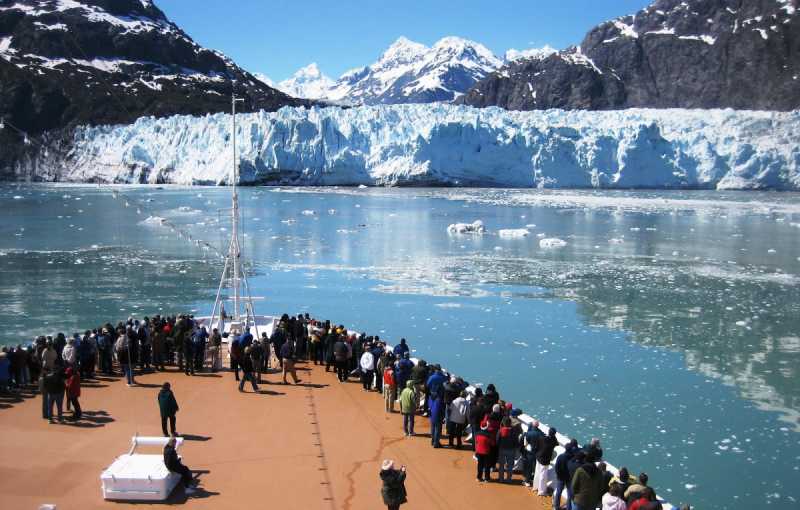
Some cruise ships will begin sailing at the end of April, but the majority start in May. Norwegian Cruise Line, however, does offer a good selection of cruises from mid- to late-April, particularly from cities like Seattle. Additionally, some smaller cruise lines might also offer departures later in the month. These can be excellent choices if you’re looking for lower prices and smaller crowds.
Weather-wise, April in Alaska is a transitional period. You can expect around 5 inches (13 cm) of snow early in the month, possibly mixed with some rain. Temperatures are on the colder side, ranging from 33 to 48°F (0.5 to 9°C). However, as the month progresses, the weather typically clears up.
As April progresses in Alaska, the natural world begins to awaken from its winter sleep. This is when wildlife, such as black bears, start to become active. If you’re cruising towards the end of April, you might be fortunate enough to see these bears as they come out of hibernation, especially in areas like Sitka. This time is also excellent for spotting bald eagles, humpback whales, sea otters, and orcas.
April is an excellent time to cruise through the Inside Passage, where you’ll be treated to clear waters and stunning coastal mountains—a great way to start the cruise season. For nature lovers, Ketchikan is another popular option. If the weather allows, you can explore rainforest hikes and go on wildlife tours, both of which are incredibly rewarding during this quieter time of the year.
Cruising Alaska in May
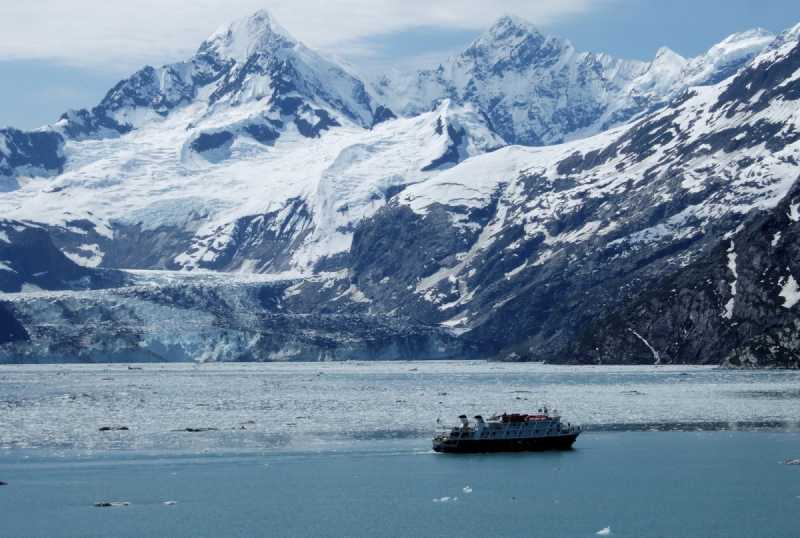
In May, Alaska’s weather becomes warmer and drier, making it a fantastic time for exploration and adventure. Temperatures during this time range from 38 to 55°F (3 to 12°C), with around 16.5 hours of daylight and minimal rain.
May is also a great month for wildlife enthusiasts. You might catch sight of black bears with their cubs, moose, caribou, and bald eagles, all drawn out by the salmon runs. It’s also possible to spot humpback whales and even orcas, making for excellent photography opportunities.
During this month, cruise lines including Royal Caribbean, Princess Cruises, and Disney start offering more cruises. It’s also the shoulder season, so you’re likely to see an increase in tourists and a rise in prices. However, the prices are still lower than during the peak season, making it a relatively affordable time to cruise. You can enjoy better deals on accommodations and excursions, as cruise lines aim to attract travelers before the busiest part of the year kicks in.
Glacier Bay becomes particularly breathtaking in May. As the cruise season ramps up, visitors have the opportunity to see glaciers calving and explore the serene fjords. Juneau is also a great place to visit during May. Here, you can go on whale watching tours, explore the city’s scenic hiking trails, or enjoy a ride on the Mount Roberts Tramway for panoramic views of the city and surrounding wilderness.
Cruising Alaska in June
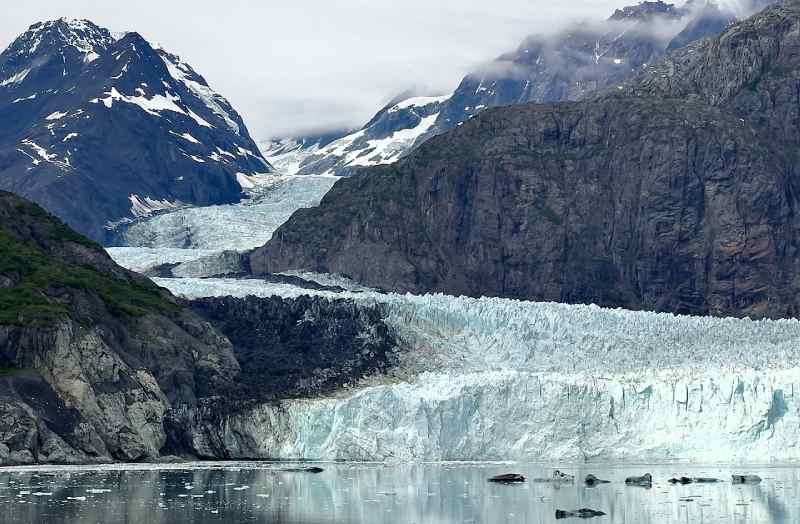
June in Alaska sees a significant increase in both daylight and favorable weather, with average temperatures ranging from 46 to 62°F (8 to 17°C) and about 3.3 inches (8.4 cm) of rainfall. This pleasant weather, combined with nearly 18 hours of daylight, attracts more tourists, especially in the middle of the month. Early June offers a good opportunity for finding discounts and enjoying lower crowds before the peak season begins.
June is an excellent month for shore excursions, thanks to the favorable weather and extended daylight. Late June marks the beginning of summer, making it an ideal time to experience Alaska’s natural beauty. It’s also one of the best months for wildlife photography, with opportunities to capture images of humpback whales, moose, caribou, and bald eagles. However, you are unlikely to see many brown bears during this month.
One of the top destinations to visit in June is Denali National Park. The weather is ideal, with little rain and plenty of sunlight, making it perfect for exploring the park’s vast wilderness. Many cruise itineraries include stops at Denali, where you can enjoy guided tours, spot diverse wildlife, and hike through beautiful trails.
Skagway is another must-visit location in June. Visitors can take the White Pass and Yukon Route Railway, which offers stunning views of the surrounding landscape. Alternatively, guided hikes or bike rides let you explore Skagway’s natural beauty and historical charm.
Cruising Alaska in July
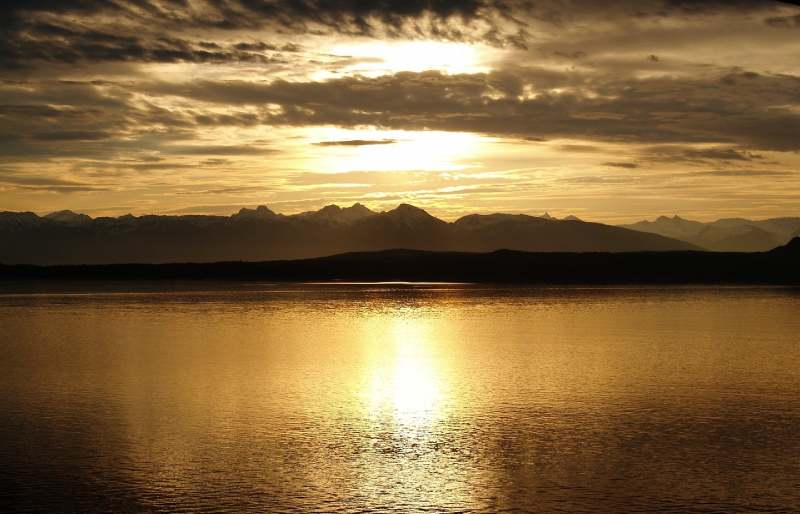
July in Alaska is the peak of summer, bringing long, dry days filled with plenty of sunshine. Temperatures range from 50 to 65°F (10 to 18°C), providing a comfortable climate for outdoor activities. However, July is also the peak tourist season, so expect large crowds and higher prices.
During July, you can start to see brown bears in places such as Brooks Falls in Katmai National Park, hunting for salmon. Remember to bring sunscreen as the sun can be very strong during this month. While packing, include both warm layers for the cooler mornings and evenings, as well as lighter clothes for the warmer parts of the day.
There are plenty of activities to enjoy in Alaska during July. Independence Day events are held in cities like Anchorage, Juneau, and Fairbanks, featuring parades, fireworks, and local celebrations that give you a taste of Alaskan culture.
In addition to Independence Day events, July is a perfect time to visit Alaska’s coastal towns and experience their unique charm. Visit Seward for its vibrant harbor, kayaking, fishing, and the Alaska SeaLife Center. Another must-see is Ketchikan, famous for its rich native culture and Creek Street boardwalk. Here, you can join guided wildlife tours to spot eagles, seals, and possibly even whales.
Cruising Alaska in August
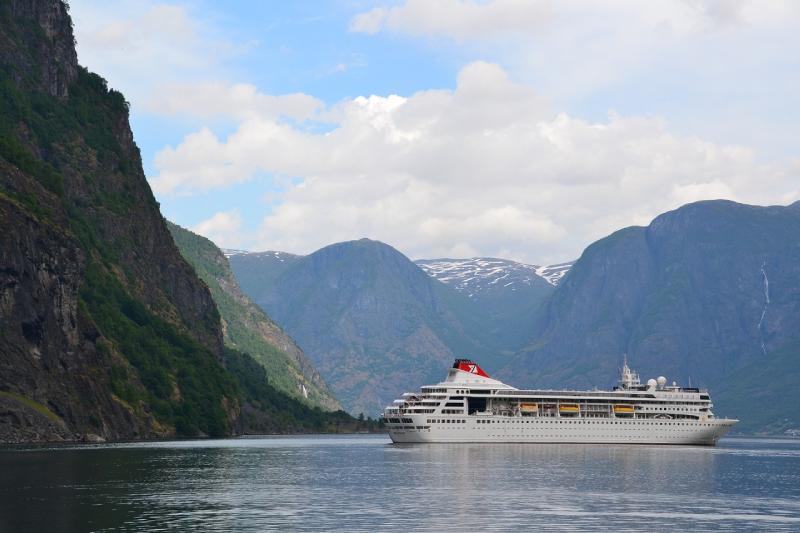
In August, temperatures in Alaska cool off a bit but remain relatively warm by Alaskan standards, ranging from 47 to 62°F (8 to 16°C). So, it’s still a comfortable time for outdoor activities and exploring Alaska’s scenery. The peak season for Alaska cruises wraps up in August. This month continues to attract a large number of visitors due to its pleasant weather and long days.
In August, cruising in Alaska tends to be busy as it is still part of the peak tourist season. The warm weather and extended daylight hours attract many visitors, resulting in larger crowds. However, the crowds are generally manageable, and the vibrant atmosphere adds to the overall experience.
August is an excellent month for fishing, as the salmon runs are in full swing. It’s also the last month for brown bear spotting as they prepare for the winter. Berry picking is another popular activity in August before they disappear in September.
Since August brings more rain, having jackets and waterproof clothing is recommended. Cruisers will find this month perfect for visiting scenic areas like Glacier Bay and going on wildlife tours to spot bears. For more unique experiences, consider taking a fjord cruise or a guided nature walk.
Cruising Alaska in September
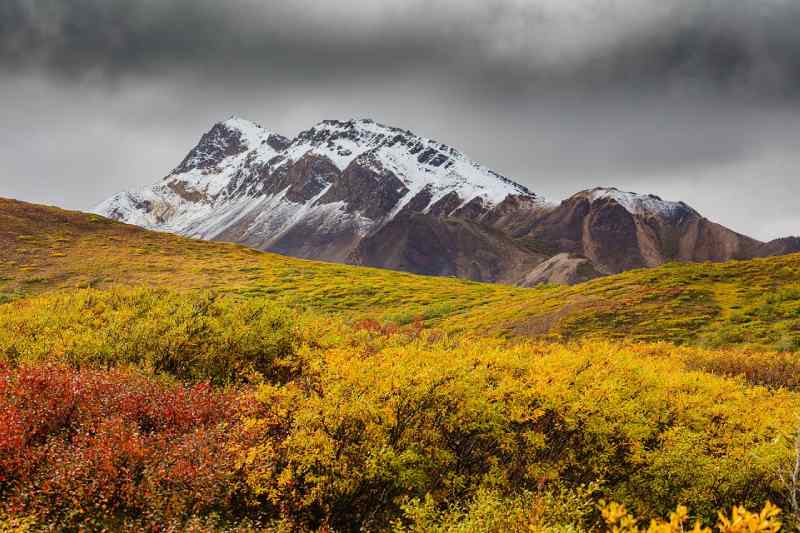
September marks the start of Alaska’s second shoulder season, bringing fewer visitors and more affordable prices. Temperatures drop to between 43 and 55°F (6 to 13°C). This month typically sees an increase in rainfall, with an average of around 7.5 inches (19 cm).
September is ideal for activities like hiking and wildlife tours; however, be sure to wear warm clothing to stay comfortable in the chilly weather. Additionally, September is a fantastic month for cruising along Alaska’s coastlines, offering spectacular views from the water as the foliage shifts to vibrant autumn colors.
The changing foliage provides a stunning backdrop for hiking, especially earlier in the month. Berry picking and fishing are also popular during this month. Plus, the fewer crowds mean more peace and quiet as you explore the Alaskan wilderness.
Cruising Alaska in October
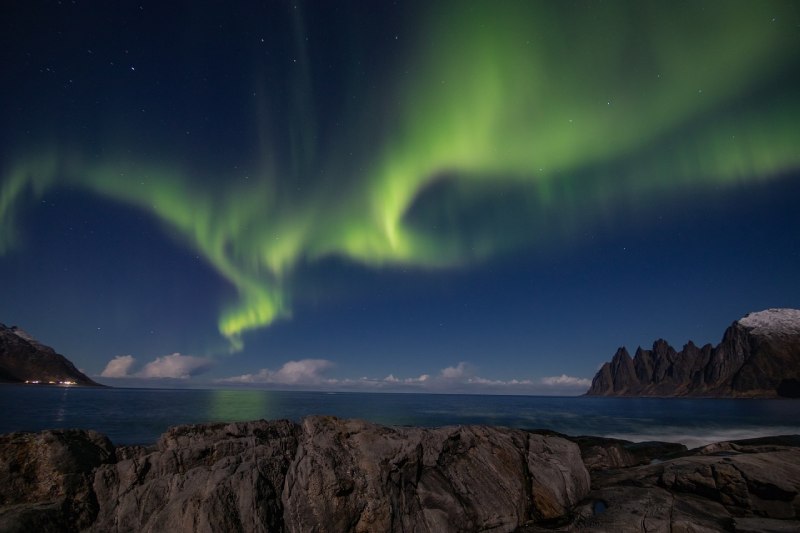
October marks a quieter time for Alaska cruises, with most cruise lines ending their operations by mid-month. Norwegian Cruise Line is one of the few larger lines offering sailings this month, with ships like the Norwegian Encore and Norwegian Jewel departing from Seattle for 7 to 9-night cruises. Due to the generally unfavorable weather, prices are lower, and you’ll encounter fewer crowds, making it an affordable time to visit.
The temperatures in October range from 38 to 47°F (3 to 8°C), and there’s a significant increase in rainfall, averaging 8.3 inches (21 cm). This month often sees the first significant snowfalls of the season, especially in higher elevations and northern regions. The weather can be quite unpredictable, with more rain and rougher sea conditions, but this also contributes to the lower prices and fewer tourists.
Alaska offers a more peaceful and quiet atmosphere in October due to fewer visitors. Norwegian Cruise Line provides cruises to stunning destinations such as Juneau, Skagway, and Glacier Bay, each especially beautiful during this time of year. In Juneau, you can explore the historic gold rush sites or kayak alongside glaciers. Skagway offers a chance to ride the scenic White Pass and Yukon Route Railroad, while Glacier Bay is perfect for whale watching and spotting the dramatic calving of icebergs.
When is the best time for an Alaska cruise?
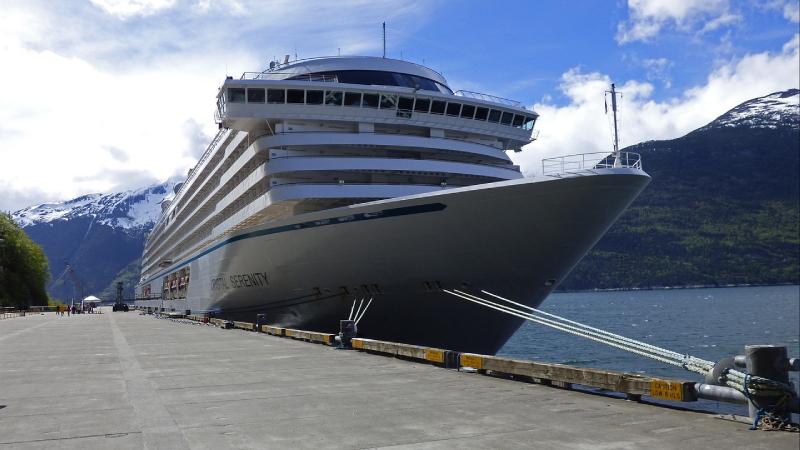
If you’re planning an Alaska cruise, the best time to go depends on what you want to experience. For those looking for pleasant weather and long daylight hours, June, July, and August are ideal. These summer months offer temperatures ranging from 46 to 65°F (8 to 18°C), making it perfect for outdoor activities and sightseeing. Additionally, summer provides the best opportunities for wildlife viewing, including sightings of humpback whales, bears, and bald eagles. July is particularly ideal for brown bear viewing, as they can often be seen hunting for salmon.
If you prefer fewer tourists and lower prices, consider cruising in May or September, which are known as the shoulder seasons. These months still offer good weather and plenty of daylight, but with smaller crowds. For wildlife enthusiasts, May is a great time to see bears, moose, and migratory birds, while September and October are excellent months for spotting the northern lights.
Read More: Alaska Cruise Mistakes: Lessons Learned from Experienced Cruisers
Best Time for an Alaska Cruise: A Month-by-Month Guide – FAQ
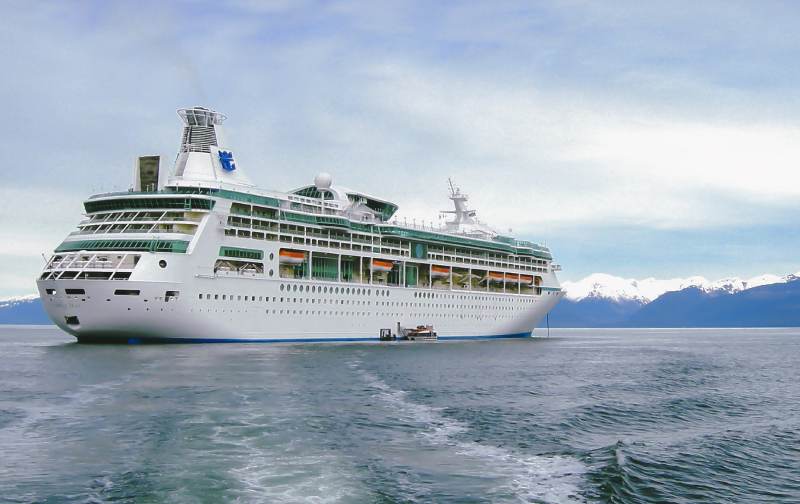
What is the best time to see the Northern Lights on an Alaskan cruise?
The best time to see the northern lights on an Alaskan cruise is from late September to October. During these months, the nights are longer and darker, providing optimal conditions for viewing this spectacular natural phenomenon. While most cruise lines end their Alaska season by mid-October, late-season cruises or land excursions to places like Fairbanks offer the best chances to witness the aurora borealis.
What is the cheapest month to cruise to Alaska?
October is the cheapest month to cruise to Alaska due to lower demand and less favorable weather conditions. However, the conditions in October can be less ideal for sightseeing and outdoor activities. May and September (shoulder seasons) offer a good sweet spot with more favorable weather, fewer crowds, and still relatively low prices.
What is the best time of year for an Alaskan cruise to see whales?
The best time of year for an Alaskan cruise to see whales is from May to September. During these months, various species of whales, including humpback whales and orcas, migrate to the nutrient-rich waters of Alaska for feeding. Peak whale-watching opportunities occur in June and July, when the whale activity is highest and sightings are most frequent.
Can you see the northern lights on a cruise ship?
Seeing the northern lights on an Alaskan cruise is possible but generally unlikely unless the cruise is specifically designed for aurora viewing. The best chances for witnessing the northern lights on an Alaskan cruise are in late September or early October, when the nights are longer and darker. Remember that most Alaskan cruises typically run in the summer months when the northern lights aren’t visible.
What is the most expensive month for an Alaska cruise?
The most expensive month for an Alaska cruise is July. This is the peak of the tourist season, when the weather is warmest and there are the most daylight hours, making it a popular time for travelers. As a result, prices for cruises, accommodations, and excursions are at their highest.
Related articles:

